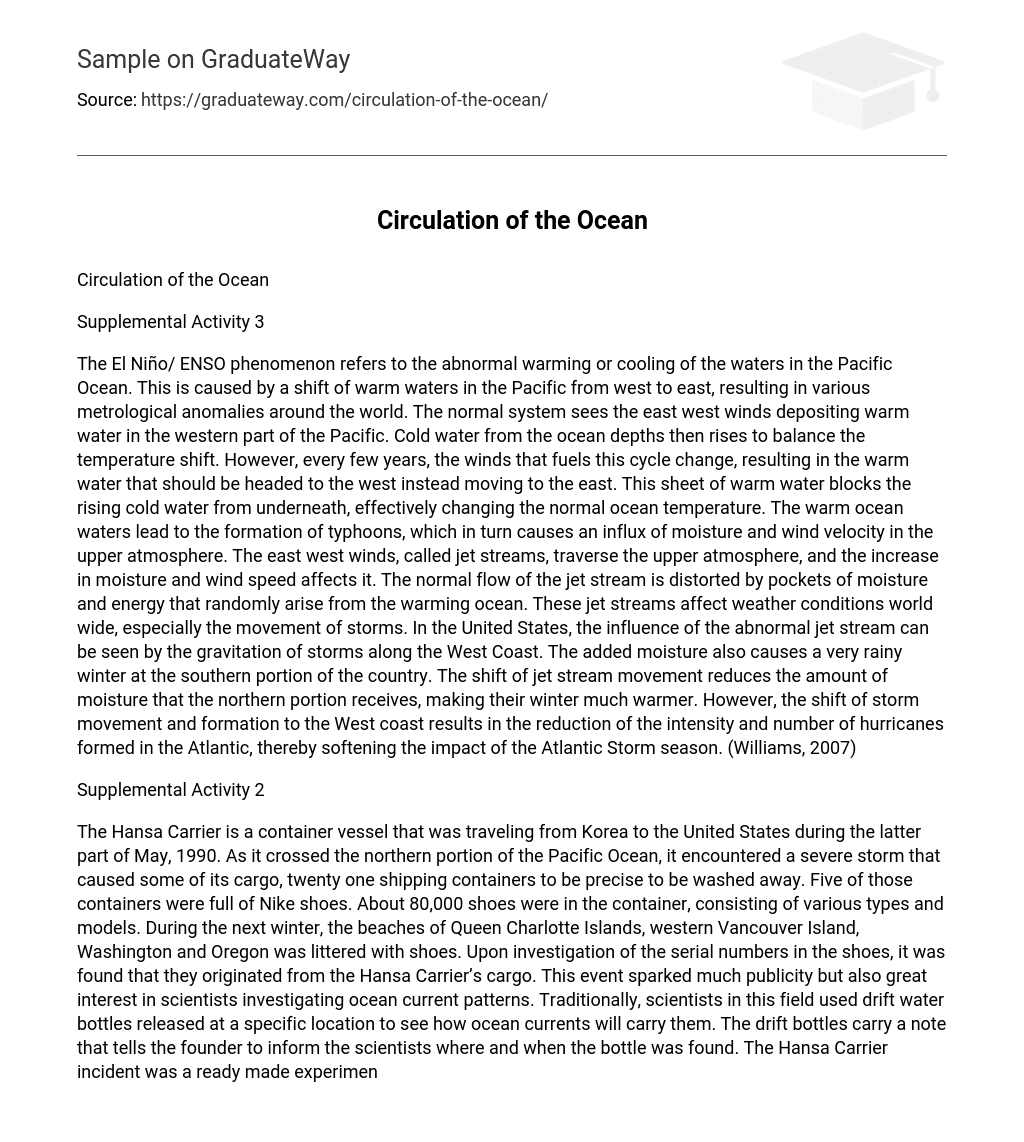The El Niño/ ENSO phenomenon refers to the abnormal warming or cooling of the waters in the Pacific Ocean. This is caused by a shift of warm waters in the Pacific from west to east, resulting in various metrological anomalies around the world. The normal system sees the east west winds depositing warm water in the western part of the Pacific.
Cold water from the ocean depths then rises to balance the temperature shift. However, every few years, the winds that fuels this cycle change, resulting in the warm water that should be headed to the west instead moving to the east. This sheet of warm water blocks the rising cold water from underneath, effectively changing the normal ocean temperature. The warm ocean waters lead to the formation of typhoons, which in turn causes an influx of moisture and wind velocity in the upper atmosphere.
The east west winds, called jet streams, traverse the upper atmosphere, and the increase in moisture and wind speed affects it. The normal flow of the jet stream is distorted by pockets of moisture and energy that randomly arise from the warming ocean. These jet streams affect weather conditions world wide, especially the movement of storms. In the United States, the influence of the abnormal jet stream can be seen by the gravitation of storms along the West Coast.
The added moisture also causes a very rainy winter at the southern portion of the country. The shift of jet stream movement reduces the amount of moisture that the northern portion receives, making their winter much warmer. However, the shift of storm movement and formation to the West coast results in the reduction of the intensity and number of hurricanes formed in the Atlantic, thereby softening the impact of the Atlantic Storm season. (Williams, 2007)
The Hansa Carrier is a container vessel that was traveling from Korea to the United States during the latter part of May, 1990. As it crossed the northern portion of the Pacific Ocean, it encountered a severe storm that caused some of its cargo, twenty one shipping containers to be precise to be washed away.
Five of those containers were full of Nike shoes. About 80,000 shoes were in the container, consisting of various types and models. During the next winter, the beaches of Queen Charlotte Islands, western Vancouver Island, Washington and Oregon was littered with shoes. Upon investigation of the serial numbers in the shoes, it was found that they originated from the Hansa Carrier’s cargo. This event sparked much publicity but also great interest in scientists investigating ocean current patterns. Traditionally, scientists in this field used drift water bottles released at a specific location to see how ocean currents will carry them.
The drift bottles carry a note that tells the founder to inform the scientists where and when the bottle was found. The Hansa Carrier incident was a ready made experiment for ocean currents since it showed the pattern that the ocean deposited the shoes from the time they went overboard until they were found. Another ready made opportunity to study ocean current patterns came with the report of a large number of bath toys found at the beaches near Sitka, Alaska in 1992. Apparently, these toys originated from a container ship that encountered a storm near the International Date Line on January 1992.
The bathtub toys were ideal since they were specifically designed to float. The ocean currents carried them away, in effect providing a clue as to how the currents move. The event sparked a call by the scientists to be on the look out for masses of bathtub toys in coastal areas. Using the point of origin, time, and place of deposit, scientists were able to construct a model to predict the movement of ocean currents. This study would be a great help in predicting variations in ocean current by El Niño as well as in predicting the movement of oils spills and derelicts. (Keith C. Heidorn, 1999)
REFERENCES
- Keith C. Heidorn, P. (1999). Of Shoes And Ships And Rubber Ducks And A Message In A Bottle. Retrieved March 25, 2007, from http://www.islandnet.com/~see/weather/elements/shoes.htm
- Williams, J. (2007). Weather disruptions begin in the Pacific [Electronic Version]. USA Today. Retrieved March 25 2007 from http://www.usatoday.com/weather/tg/wninogrf/wninogrf.htm.





